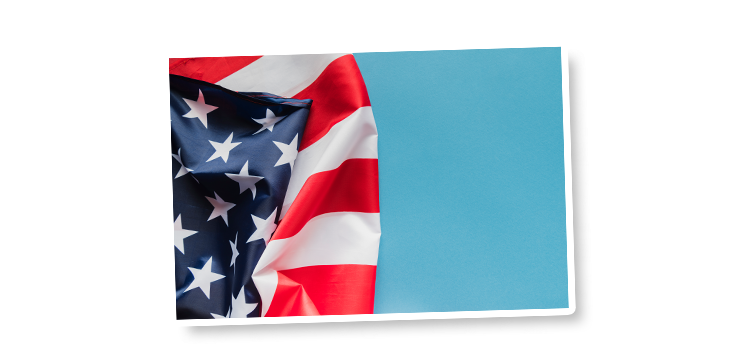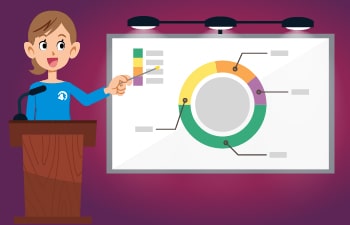June 14 is Flag Day in the United States. It is a day set aside to celebrate the adoption of our country’s most recognizable symbol. Many nations have a dedicated day to honor their flag, and in the U.S. we chose this date because our flag was first adopted on June 14, 1777.
Quick History of Flag Day
On June 14, 1777, The Continental Congress adopted the Stars and Stripes– the official emblem of the United States – a flag representing each of the original thirteen colonies. As new states joined the Union, additional stars were added to the flag, each Independence Day. This tradition continued until 1959, when Hawaii became the 50th state. Although Flag Day has been observed since 1916 and was recognized as an official observance day in 1949, it is not designated as a national holiday. But, that doesn’t mean we can’t celebrate!
Why Have a Flag Day Celebration in Your Homeschool?
Homeschooling parents and caregivers know that everything is a cause for celebration. We create unit studies out of everyday occurrences; hummingbirds at the feeder, unique insects in the garden, you name it! There’s always something to celebrate and learn.
Flag Day is no different! It’s the perfect opportunity to discover the symbolism of the stars and stripes, learn about the national anthem, or even the flags’ significance during the 1969 lunar landing. If you’re ready to express patriotism in your homeschool, here are some Flag Day activities and ideas to kick off your summer learning!
Patriotic Learning Resource
Time4Learning members, make your holiday celebrations even more educational and meaningful with this free download of patriotic lesson plans for all grade levels.
Flag Day Activities: Ideas by Grade Level
If you’re looking for a way to supplement your Time4Learning lessons, or just need a change of pace, there are some Flag Day learning activities by grade level. Browse the list below for inspiration and introduce your homeschooler to the storied history of our nation’s flag.
For Preschoolers and Kindergarteners
For Preschoolers and Kindergarteners
Young children do best with hands-on activities that develop fine motor skills. Consider incorporating Flag Day activities that involve all of the senses. Attention spans will vary by age, so keep lessons short and simple.
Note: Multiply your child’s age by two or three to estimate their attention span in minutes and try to keep the activity within that time frame. Here are a few suggestions:
- Make an edible flag: You can’t go wrong with snack time, especially when paired with a quick age-appropriate Flag Day read from the library. After the story, set out red and blue candy or fruit (like blueberries and raspberries) and have your child decorate a vanilla frosted “flag” graham cracker.
- Lead a Flag Day Parade: Organize a Flag Day parade around the neighborhood, use either store-bought mini flags (check the dollar store), or have your kids make their own. Decorate the wagon or stroller, put a flag bandana on the dog, and have a parade.
- Flag paper craft with strips and stickers: Preschoolers can make a construction paper flag while building fine motor skills.
- white and red construction paper (tear into 13 strips)
- large rectangular blue construction paper, cut to size (flag base)
- Mini silver or white “reward” stickers
- glue sticks
What you’ll need:
For Elementary School Students
Cooperative activities are ideal for elementary students. Working together toward a common goal is especially important as social and emotional learning are paramount. Fostering friendships and cooperation should be encouraged.
- Create a flag: Consider letting homeschoolers collaborate with friends, perhaps in a co-op capacity, working together to design a new flag that represents their group. This is a great way to foster creativity and get them thinking about symbolism within their community.
- Decorate the neighborhood: This is another activity you can do with co-op friends; reach out to neighbors on your neighborhood social media site and ask them if they’d like your learners to decorate their yard with a few mini American flags from the dollar store.
- Teach flag etiquette: I’m Your Flag So Please Treat Me Right, by Julia Cook is the perfect introduction to properly displaying and handling the flag. Use the book as a read-aloud and as the opportunity arises throughout the year, refer back to it. For example, point out to your learner, when and why a flag might be flown at half-mast.
For Middle School Students
As middle-grade learners mature, they begin to think independently and start to form their own opinions. Flag Day activities for this age group should center around field trips or community service.
- Take a field trip: If you happen to live near Philadelphia, New York, Triangle, VA, or Washington D.C., take a field trip to see a famous American flag, or learn more about some of the places where the flag is continuously displayed.
- Note: Research your local National Parks. Some sites – like Fort Sumter in Charleston, SC – invite visitors to assist in the afternoon flag ceremony.
- Acts of community service: According to The State of Senior Hunger in America in 2021, food insecurity affects one in eleven seniors, some of whom are U.S. Veterans. Organizations like Meals on Wheels allow families to deliver meals to those who are homebound. Giving back to the community is the perfect way to celebrate Flag Day.
For High School Students
Parents and caregivers of homeschooled high schoolers play a unique role in the lives of their learners. It’s no longer necessary that they take center stage in organizing and facilitating activities. Instead, they simply provide resources and ideas and let their young adults take the reigns. By now, teens have transitioned from the doing and understanding stage, and are now ready to take ownership of their learning.
- Debate a topic: Celebrate Flag Day by addressing everyone’s right to freedom of speech. Choose a topic and discuss one another’s viewpoints.
- Flag-themed art installation: Let your learners express their creativity in their favorite medium by hosting an installation featuring flag-themed, student-created art.
- Conduct a flag etiquette workshop: Have your high school-age homeschoolers research flag etiquette, then plan and facilitate a community workshop for younger homeschoolers. Some points to highlight can include teaching younger learners a bit of flag history and basic flag etiquette.
If you’re looking for a unique way to close out your homeschool year, consider celebrating Flag Day. It can serve as an easy segue into the summer months and is a great excuse to bring your homeschool group together one final time, before summer break.







